
July 2007
- 2007-2008 Buyer's Guide
- New Rules for Teen Workers
- Softer, Better Backup Alarms
- Debunking Emergency Equipment Myths
Click here to subscribe.
Features

By Peter Cholakis, Mari Ryan
ONE doesn't need an MBA to recognize that getting high productivity from company assets is a fundamental element to managing a successful business. Any asset that is not maintained and improved eventually will stop producing.
By Joe Konop
AS facility and safety managers have recognized the need for a range of safety solutions across many applications, much has been written about meeting American National Standard Institute (ANSI) requirements and the importance of routine emergency testing. The ANSI standards are mostly black and white, but there are other issues surrounding emergency equipment that are more like fuzzy shades of gray.
By Marc Barrera
SUMMER is traditionally a carefree time for teen-agers, but it is a time to work for as many as 4 million teens ages 15 to 17, according to NIOSH. Accordingly, agencies and organizations ramp up their efforts each year to inform the public of certain occupational dangers; one example is OSHA's 2007 Teen Summer Job Safety Campaign.
By Jerry Laws
THE National Fire Protection Association’s Technical Committee on Fire Service Occupational Safety and Health is significantly revising NFPA 1584 according to a timetable that would produce a new standard for firefighters’ rehabilitation in 2008.
By Dale Kaplan, LCSW-C, MSWAC, Park Dietz, MD, MPH, Ph.D.
MOST employers think of the services of an Employee Assistance Program (EAP) as a health benefit, focusing particularly on the free sessions available to an employee prior to using behavioral health insurance benefits.
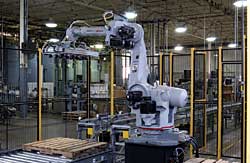
By Tom Simone
DAN Schodowski faced a challenge. As president and CEO of Solon, Ohiobased JTM Products, Inc., Schodowski knew the company was ready to grow, and making the right investment choices would be critical. Should the company buy an existing facility or build a new one? What new material handling equipment would be needed to support its growth?
By Casey Hayes
DO you remember the days of the typewriter? Correction tape, carbon paper . . . the days when editing usually meant re-composing your thoughts once again from scratch. The word processing capabilities of the modern computer changed all of that forever, and for the better! However, the ease of today's "copy and paste" functions can sometimes make it too easy to duplicate past directions without visiting appropriate changes.
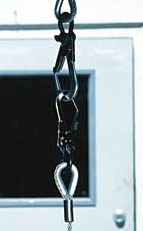
By Marty Sharp
YOU buy and use fall protection harnesses, lanyards, rope grabs, lifelines, retractables, and other equipment every day. Each item is labeled, ensuring that it conforms to ANSI specifications and OSHA regulations. These product certifications give you confidence and peace of mind.
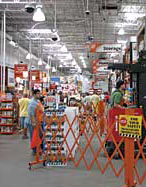
By Barrett Miller
JUST before Christmas, I went to purchase supplies at a "big box" retailer. As I turned a corner to enter a wide aisle, I saw a narrow forklift coming toward me. It was moving too fast for a retail store. The driver was traveling with forks trailing but looking behind him. He was laughing. I heard no alarm. When the forklift was 20 feet away, the driver was still unaware of my existence. He continued to drive. I screamed. He turned his head.
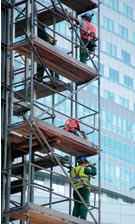
By W. Jon Wallace, CSP, MBA
I read the preceding statement while performing a simulated OSHA inspection. Most fall-related injuries result from the lack of fall protection. Additional injuries occur from improper use of fall protection—utilizing a body belt instead of a full body harness, improper use of lanyards, or utilizing an inadequate anchorage point.
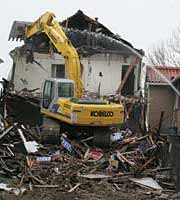
By Jerry Laws
Office Depot recently conducted a survey that found 71 percent of businesses do not have a disaster plan in place. Federal data indicate more than 40 percent of businesses never reopen after a disaster affects them, according to the company. Because 80 percent of its customer base is small to medium-sized businesses, Office Depot considers it important to help them protect their businesses, said Tom Serio, Director of Global Business Continuity Management for the company, which has 52,000 associates and about 1,500 stores worldwide.
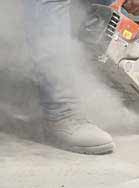
By Jerry Laws
You may not realize that a worker's shoes make him or her more productive, but Tom Votel makes a good case below for the proposition. And if good footwear and inserts can boost productivity, it stands to reason that poor footwear can harm it. Votel, President and CEO of Ergodyne discussed footwear's role in worker productivity during an April 13, 2007, conversation with Occupational Health & Safety's editor. Excerpts from the conversation follow.
By Larry Altmayer
OSHA has long required employers to evaluate the workplace for electrical hazards. Most employers are familiar with possible shock hazards, but in recent years, and with the publication of the 2004 edition of NFPA 70E, electrical arc flash hazards are now being assessed and quantified.
By Linda J. Sherrard
MY first exposure to alarm warning situations was watching the robot on “Lost in Space” alert space travelers to immediate danger. The message is the same today: Stop what you are doing, immediately react to the tone and sound, and act accordingly (avoid the hazardous situation by responding correctly). Do your employees know the sounds of safety at your workplace?
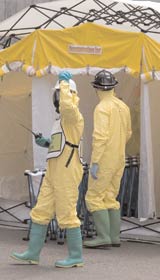
By Karen D. Hamel
TANK overfills. Forklift punctures. Floods. Earthquakes. Willful destruction. Spill response planners are tasked with creating plans for any possible spill incident that could occur at a facility. Often, however, the “best” or “ideal” plan to handle a situation is scrapped because of budgetary, manpower, or space constraints. Sometimes, less-than-perfect plans are developed because plan coordinators aren’t aware of the wealth of resources available in their communities. Acknowledging that the facilities may not need to purchase or store all of the items they could ever possibly need is an important first step toward achieving a more ideal spill response plan.
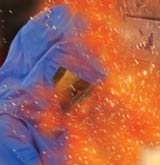
By Mike Longman
IN 2005, Bowater Inc., a leading producer of coated and specialty papers and newsprint, stood by its commitment to ensure the safety of its workers at a Grenada, Miss. facility that is Mississippi’s only newsprint manufacturer. Bowater looked to our Electrical Services and Systems district office in Pelham, Ala. to implement its arc flash training, perform an Arc Flash Hazard Analysis to assess its safety needs and concerns, and to coordinate its power systems.
Departments
By Robert Pater
WANT to break through vexing problems? By understanding underlying methods of turnaround change in one area, you can apply these strategies to other longstanding challenges.
By Jerry Laws
THE fall hazards on a multi-span Interstate 30 bridge construction project just west of downtown Dallas could take your breath away. As I drove past most afternoons, I was so focused on the height and length of the bridge beams that I never thought about the 10-foot fall hazards to which the contractor’s engineers can be exposed before the beams even come off their delivery trucks.
By Waldo Waldman
INTEGRITY First. It’s core value #1 of the U.S. Air Force—embraced by our leadership, taught in our training programs, and a symbol of the commitment and character of the men and women serving our country.
I learned a valuable lesson about the true meaning of integrity only after serving several years in the Air Force. It wasn’t on a combat mission flying an F-16.
By Ronnie Rittenberry
IT'S an imperfect world. All tends toward entropy, dissolution, and decay; things break, fall out, shrivel. In industrial environments, belts snap, parts erode, fuses blow. The latter happens more often than you might think.
By Dr. Shawn Adams, C.P.C.U., A.R.M., PHR, CHCM
OVER the past few years, disasters and emergencies have garnered much attention in American society. From the disaster that did not occur, Y2K, to the attacks on the World Trade Center, the blackouts in 2003, the multiple hurricanes making landfall during 2004 in Florida, Katrina in 2005, and the droughts and subsequent wildfires as well as the flooding and mudslides in the Northwest in 2006, it seems like a steady drumbeat of bad headlines have caught America’s attention for the past few years.